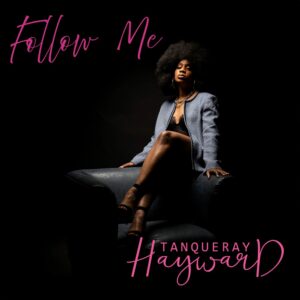I can’t say that I’m a “Dead Head.” I mean, I knew that The Grateful Dead was a band fronted by Jerry Garcia. They were active from the 1960s until the mid 1990s when Garcia died and the group disbanded. Their fans – known as The Dead Heads – loved the Bay Area based band and often followed the group from venue to venue. That passion often got passed down from parents to children, so many families include multiple generations of Dead Heads. Rip Rense is an avid Dead Head. He’s also a big fan of the a cappella group The Persuasions. A little more than a decade ago, he came up with what seems like an odd pairing – The Persuasions doing an album of Grateful Dead tunes. That record is called Might As Well: The Persuasions Sing the Grateful Dead. I heard about this album on NPR when it first came out, and the juxtaposition of an a cappella group doing the Dead’s music caught my attention.
The pairing became less novel when I learned more about The Persuasions’ eclectic musical excursions. The group released a Frank Zappa tribute record prior to the Might As Well. Might as Well was well received, but Rense wasn’t satisfied. He believed that the highly regarded album was missing something. The 2000 project lacked three songs that Rense wanted included – “Stella Blue,” “Greatest Story Ever Told” and “New Speedway Boogie.” Rense also felt that Might as Well was a little to sedate, and didn’t capture the influence that the black church had on The Persuasions’ style. So, Rense convinced Jerry Lawson, the group’s co-founder, principal arranger and producer to reunite with The Persuasions to re-record some of the material. The result is Persuasions of the Dead. Rense re-mastered some of the tunes, organized the album like a Grateful Dead concert with two CD’s (representing a first and second set), and brought in additional backing artists – including former Dead backing vocalists Gloria Jones and Jackie LaBranch on seven of the songs.
The differences between Might as Well and Persuasions of the Dead are sometimes subtle and sometimes not. The most obvious are the additions of Jones and LaBranch, the inclusion of the three tunes omitted from the 2000 album, and some changes in presentation of the some of the tracks, such as alterations in arrangements, the slimming down of some tracks and a relative re-presentation of others. For example, the version of “The Greatest Story Ever Told” features call and response and shouts of praise that definitely have their roots in the black worship experience. Rense worried that the inclusion of full blown musical accompaniments on certain songs may have taken away a bit from what was principally an a cappella album. The group’s voices are too distinct and the vocal arrangements too well crafted for that to be an issue. Besides, Rense’s main objective in having an a cappella group sing these songs was to force people intent on keeping the Dead cast as a “hippie band” to consider the lyrical quality of their music. That comes through loud and clear on Persuasions of the Dead. The Grateful Dead was a melodic and soulful group. Those qualities make tunes such as “Ripple,” ”Sugaree” and “It Must Have Been the Roses” good musical candidates for The Persuasions’ tight four-part harmonies.
The release of Persuasions of the Dead comes at a good time. A cappella singing is making a comeback with groups such as Straight, No Chaser and Naturally 7 drawing a large following from fans pining for those intricate vocals. Persuasions of the Dead introduces The Grateful Dead songbook to a new generation of music fans because it’s been more than a decade since the band last performed. Removing the instruments and turning these song over to The Persuasions’ creative arrangements and clear vocals will give fans an even better appreciation of the quality of The Grateful Dead’s work — and remind them again of what made The Persuasions perhaps the greatest a cappella group of all time. Recommended.
By Howard Dukes









